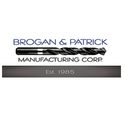-
About
- About Listly
- Community & Support
- Howto
- Chrome Extension
- Bookmarklet
- WordPress Plugin
- Listly Premium
- Privacy
- Terms
- DMCA Copyright
- © 2010-2025 Boomy Labs

 Shawn Healy
Shawn Healy
Listly by Shawn Healy
Acrylic, the chemical name of which is Poly (methyl methacrylate) is known to be a transparent thermoplastic, which is used for a variety of applications specially for displays, signs and for various merchandising purposes.
Like metal fabrication, acrylic fabrication is a process that involves certain operations like compounding, acrylic extrusion, welding, lamination, acrylic foaming, vacuum foaming, etc. in order to offer the desired shape, size and structure to acrylic materials
Source: http://www.brogan-patrick.com/blog/things-to-know-about-acrylic-fabrication/
Being a fabrication friendly product, acrylic can successfully withstand processes like cutting, machining, finishing or bending that provides acrylic its desired shape and structure. The first step in acrylic fabrication involves creating a mold with the desirable form and shape in which the molten acrylic is poured. Because of its inherent thermoplastic properties, acrylic becomes flexibly supple when heated that allows it take any shape of any contour, which it takes up once cooled. Acrylic reacts successfully to fabrication processes like drape forming, cold forming and thermoforming to acquire desirable shapes and patterns.
Different tools are used by experts in order to achieve enticing acrylic patterns required by clients and industries. Some of these tools are machining lathe for cutting plastic sheets, milling machine for moving the plastic sheets, polishing machines to provide beautiful finishing to the plastic and annealing machine to distress the plastic.
Acrylic fabrication involves all the methods that are used to create desirable shapes and structures out of unprocessed acrylic.
Acrylic sheets are cut according to requirements using acrylic-cutting blades, plastic cutter, saber saws, table saws or routers. Acrylic articles are given a flame-polished and glossy finishing at the edges by using hydrogen-oxygen torch.
Acrylic fabrication also includes processes that render desirable colors and decorations to acrylic materials with the help of methods like spray painting and screen-printing, and by using decorative vinyl films.
In many cases, more than one acrylic piece is used to affix the articles in order to create a custom-made object. Here, the fabricators use adhesives, nuts and bolts, screws and ultrasonic welding to attach one acrylic piece to another in order to make objects like trophies, displays, decorative items etc.
he most common usage of acrylic can be found in exhibition and display solutions in the form of decorative items, light fixtures, trophies, signage and point of purchase displays. However, apart from that acrylic is also used for the following purposes:
Having excellent optical clarity and resistance to impact, sunlight and extreme temperatures have made acrylic-made articles apt for several domestic, industrial and commercial applications.
